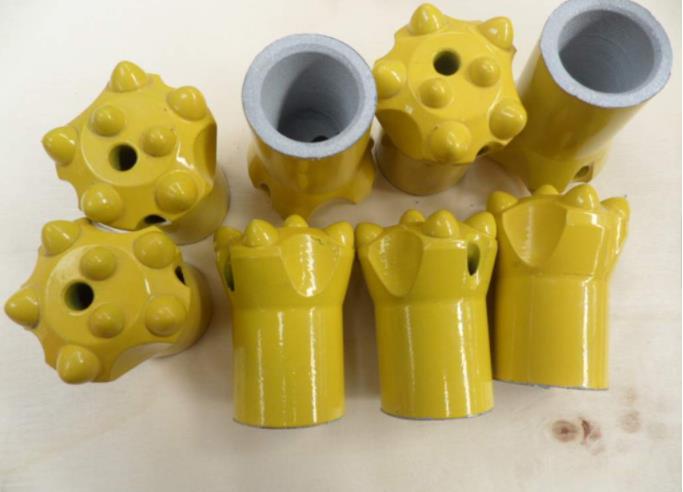Instructions for use of threaded drill bits

In order to use the button bit correctly and ensure that the button bit is worn and discarded normally, the following points must be paid attention to:
1. According to rock conditions (hardness, corrosiveness), drilling methods (open air, underground, tunnel drilling, production drilling, anchor hole drilling), powder discharge medium (compressed air, high-pressure water), rock drills (heavy, light, pneumatic, (Hydraulic) Select drill bit. Different ways of distributing teeth and discharging powder are suitable for different construction sites. Please refer to the attachment for the typical button bit and the recommended range of use. Choosing the correct drill bit is a prerequisite for obtaining the maximum drilling speed!
2. It is necessary to be stable when opening the hole, and the working parameters of the rock drill must be lowered to prevent the single tooth from being overloaded, causing broken teeth and tooth loss;
3. According to the rock drilling conditions, adjust the working parameters of the rock drill in time, and adjust the impact, propulsion, and rotation parameters based on the standards of no sticking, fast drilling speed, and no bending of the drill rod. It can also be judged by measuring the temperature of the connecting sleeve between the shank tail and the drill rod: the normal temperature in the case of passing water and powder discharge is ≤40°C, and the normal temperature in the case of passing compressed air and powder discharge is ≤70°C;
Note: Do not stop water or gas during the use of the drill bit, otherwise it is very easy to cause the drill bit to heat up and cause the drill bit to break or lose teeth and cause failure.
4. After a certain period of operation of the button bit, the alloy teeth and shell wear of the bit should be checked regularly. When the alloy teeth or the shell are found to be worn out, the relevant tools should be used for grinding in time to avoid affecting the drilling speed and preventing the inverted taper of the drill bit from causing sticking. If the alloy teeth and the shell are severely worn, in order to avoid waste holes caused by tooth loss and breakage of the bit body, a new bit should be replaced in time.
5. Please notify our company in writing in time for the button bit that has been abnormally scrapped in the early stage. The main contents of the notice include:
1) The model and actual working parameters of the rock drill used (impact pressure, impact power, impact frequency, propulsion force, rotation speed);
2) The model of the trolley used;
3) The manufacturer, specifications and usage conditions of the supporting shank, drill rod and connecting sleeve;
4) Rock type and hardness, construction location (open air, underground, tunneling, production, anchor hole, other), drilling construction method (downward, horizontal, fan, other), drilling depth;
5) Statistics on the failure of drill bit:
A. Failure mode (broken tooth, tooth loss, wear), life, quantity;
B. Button wear (residual height);
C. Planned service life;
D. Normal average service life;
E. Average service life of other manufacturers.
6. When the drill bit is in rock drilling, sufficient water pressure or wind pressure should be ensured to prevent excessive wear and sticking of the drill bit due to poor powder discharge, so as to increase the drilling speed.
7. When ordering a button bit, you should specify the shape of the bit (E), the shape of the button (hemisphere, bullet), the number of teeth, the connection thread or provide physical samples.

Related products Link:




